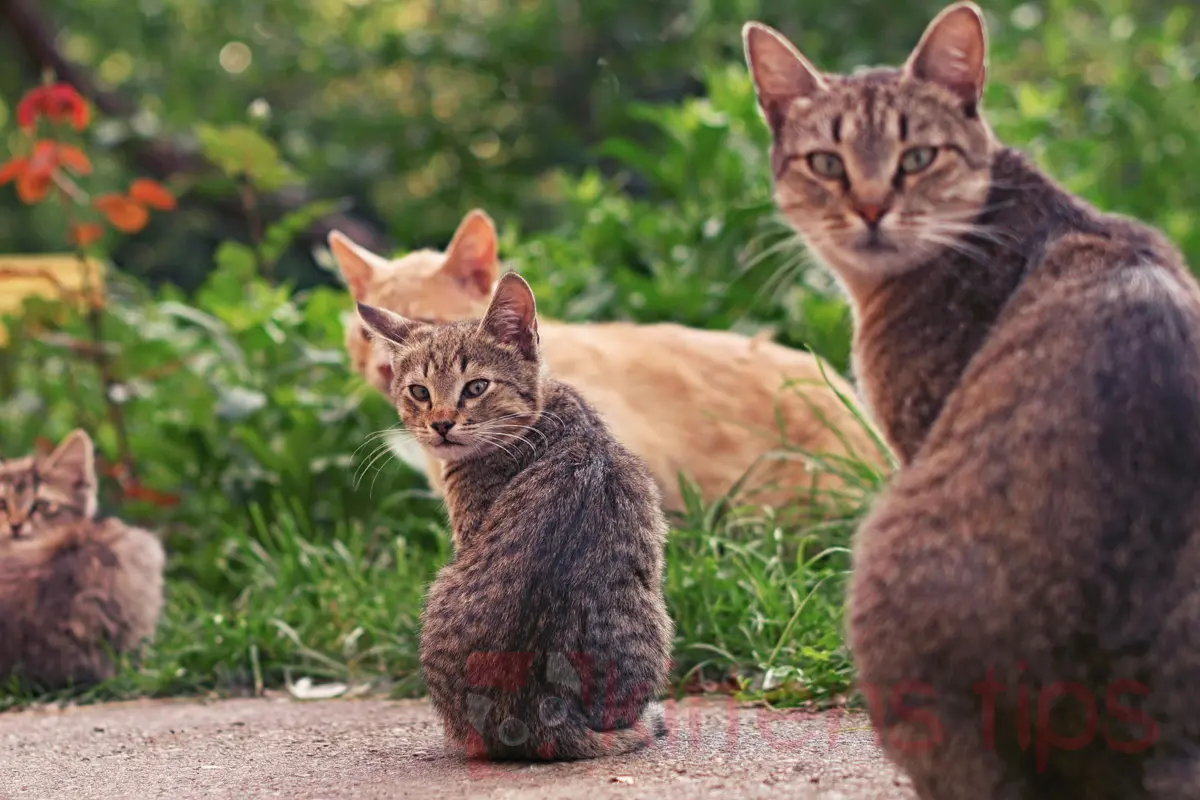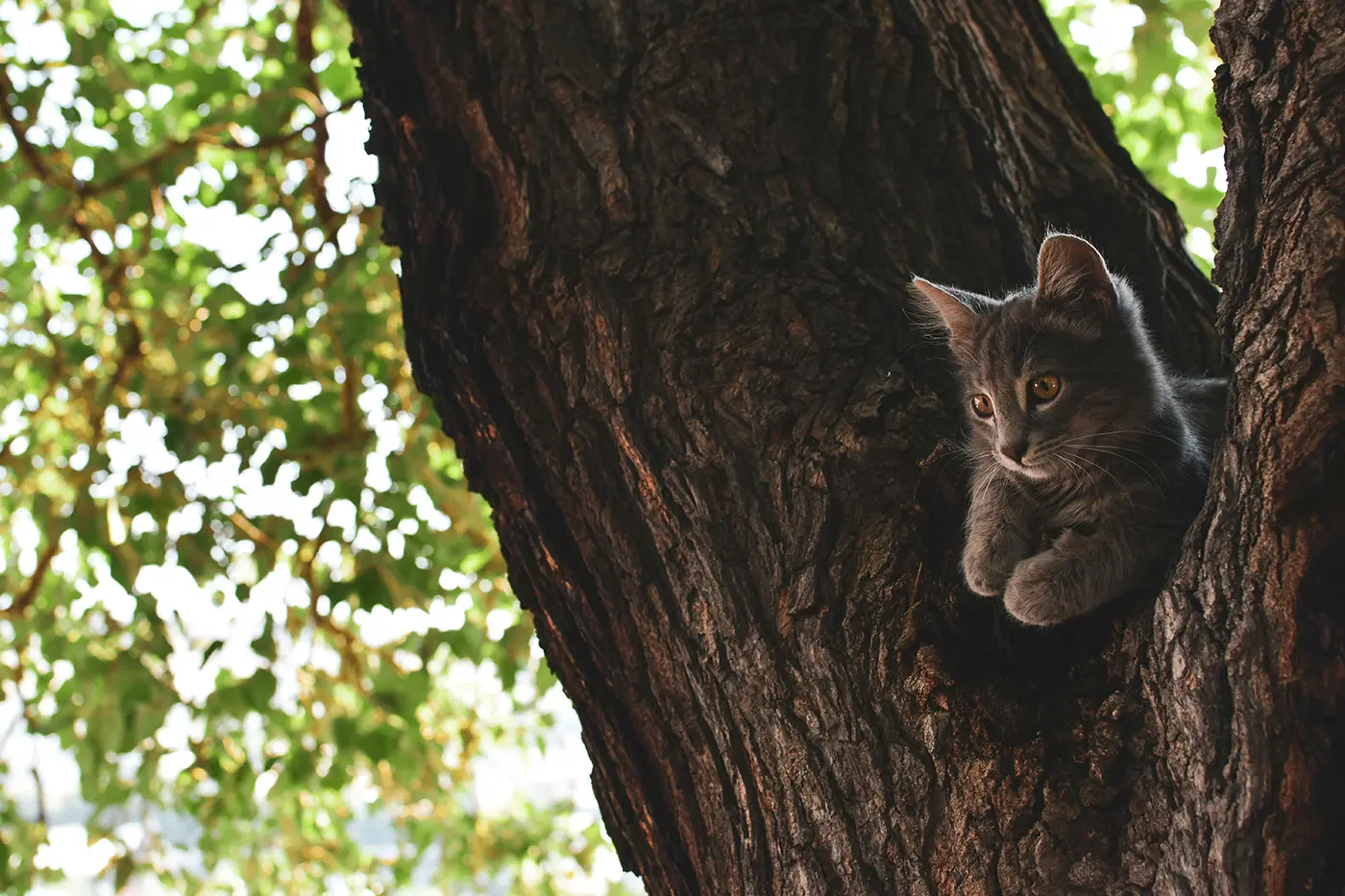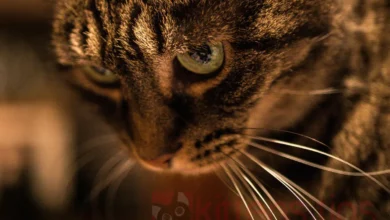
How long does a cat live and what are the stages of life?
Before you find out how long a cat lives and what the stages of a cat’s life are, let’s see where the legend came from that says a cat has 9 lives.
It is said that a cat has 9 lives, but in reality, it has only one life like any other living being. The myth that cats have 9 lives comes from ancient Egypt. At that time, the goddess Bastet, with the body of a woman and the head of a cat, was venerated. The Egyptians said about this goddess that she had multiple lives, which led to the belief that cats also had the same.
Returning to real life in our days, the lifespan of a cat depends very much on exposure to dangers, accidents (especially outdoor cats), quality of life, and genetic heritage.
Table of Contents
How long does a cat live – Stages of life
A longer lifespan often depends on the environment in which they live, sterilization, and diet. A cat that stays indoors has a good chance of reaching or even exceeding 20 years of age, while a cat that stays outdoors and roams around may reach 8-10 years of age at best. It is known that the breed of the cat also determines longevity. Siamese and Burmese cats seem to live longer than other breeds or common cats. There are also exceptions when a cat can live up to 30 years old.
The life of a cat consists of 6 stages. In each stage of a cat’s life, it requires specific attention.
1. Kitten – from birth to 6 months old
This is the stage when the kitten begins to explore and learn the first things. To become acquainted with the surrounding environment and start developing its first natural abilities. In “10 tips on how to raise a happy kitten” we gave useful advice on how to take care of a kitten and what to do for its safety and education.
Related: How to Raise a Happy Kitten. 10 Very Useful Tips
The main concerns of the kitten will be play and sleep. A 6-month-old cat is equivalent to 10 human years.
2. Junior – from 6 months to 2 years
In just 2 years, the cat will almost reach its maximum size. The body will be defined and developed, and soon it will pass the childhood stage. However, note that a cat can reproduce shortly after 1 year. It is good for the cat to be neutered by 2 years old and have up-to-date vaccinations. This applies to both female and male cats.

3. Young adult cat – 3 years to 6 years
In human years, it means the cat is between 28 and 44 years old. It’s the period of life when the cat reaches the peak of performance, is strong, and healthy. However, remember to vaccinate and have medical check-ups if you notice that something is wrong with the cat.
4. Mature or adult cat – between 7 years and 10 years
At this age, the cat begins to show the first signs of slowing down, and it’s the period when it starts to gain the most weight. Food should be adjusted for mature cats, as well as the quantity. Obesity is a danger to the health and life of mature cats. It is good to intensify routine check-ups.
A 10-year-old cat is equivalent to 56 human years.
5. Senior – the cat is between 11 and 14 years old
Starting at this age, cats begin to show the first signs of old age. In human years, the cat reaches 72 years.
Smell, taste, and hearing lose some of their accuracy. Joints become less flexible, and reflexes are reduced. Starting at this age, we must be very attentive to all signs of the cat’s old age and help it through diets, frequent vet checks, and environmental conditions.
Diet is very important for senior cats. Many cat food manufacturers offer optimized menus specifically for cats over 11 years old.
6. Geriatric cat – Over 15 years old
At the age of 15, the cat is equivalent to 76 human years, and each cat year will be equivalent to 4 human years.
At this age, the signs of aging are becoming more pronounced, and owners need to be attentive to all signs that could indicate a medical problem. If the cat has a decreased appetite and begins to lose weight, it may indicate a digestive problem. Frequent urination and excessive thirst may indicate urinary tract problems or blood sugar levels that are not within normal parameters. Stiffness and reduced mobility can be signs of arthritis.

In practice, cats begin to develop medical problems at this age just like humans.
Visits to veterinary clinics should be as frequent as possible.
The answer to the question “How long does a cat live?” is determined by the quality of life in all stages of development, by breed, and by genetic heritage.
In conclusion, understanding how long does a cat lives is very important for cat owners. From kittens to geriatric cats, knowing the lifespan helps ensure optimal care and ensure a fulfilling life for our feline companions.



